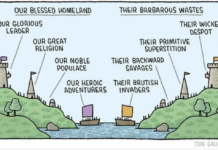The need for precaution is being partly blamed for the latest delay in getting AgResearch’s GE rye-grass from lab to commercialisation.
Concern about a potential allergen in pollen from the GE rye-grass is behind the decision to pull the application for field trials in Australia.
Newsroom reports that the withdrawal of the application is to address the concerns of the Biotechnology Regulator which AgResearch and it’s partners are now working on.
https://www.newsroom.co.nz/
This is an embarrassment for politicians and industry using the example of GE Ryegrass to claim New Zealand’s strict regulations for GE have ’caused us to miss out’.
Consumer trust in food safety is paramount. Everyone knows that getting it wrong can be costly. There are memories of the global recall of Starlink corn which is estimated to have cost a billion US dollars.
https://scholarship.law.wm.
Is the Precautionary Principle to blame for delaying progress?
Science knows so much more today, so is precaution becoming unreasonable by slowing progress?
The Precautionary Principle made sense when The Royal Commission on Genetic Modification gave it’s advice for New Zealand to ‘proceed with caution’.
That was then, this is now, the argument goes. Things are different.
The belief today is that CRISPR-cas9 makes Genetic Engineering much easier to control and safe.
Except that it doesn’t, not always, and that’s why we need to check.
https://www.biorxiv.org/
A review is under way to ensure that New Zealand’s regulatory settings are right for GMO use in bio-medicine.
https://consult.environment.
Good thing too, as nobody would want to see regulatory settings slowing important medical developments as some have warned about. Most people support use of ethical GE biotechnology in medicine, in wider research and for controlled applications.
But the issues are different when it comes to food and to protecting complex natural environments. Safe enough is not good enough.
https://link.springer.com/
The debate in New Zealand raised by The Act and National parties is about commercial release of GMOs and exemptions from regulation of Gene Editing.For some in the biotechnology industry, ‘precaution’ and regulation are dirty words.
On the one hand the Chief Science Advisors, The Royal Society and experts say the science is settled that GE is safe. On the other hand scientists including those for the European Ministers of the Environment say that regulation is needed to ensure there is safety, not to assume it.
https://www.youtube.com/watch?
What are the dangers of Precaution?
There is some evidence that the Precautionary Principle can be harmful, and may have even killed people.
One example cited is Golden Rice which was developed to help poor people with vitamin-A deficiency. The story goes that precaution was part of a long delay in saving thousands from nutritional deficiency with the miracle product of GE Golden Rice. This product took years to be launched. Technical problems and opposition of local communities and anti-GMO groups are blamed for slowing its release.
The long drawn out argument is all but settled now, thanks to the US FDA.
The good news for belief in the hope offered by Golden Rice is that the product has at last been approved for sale in New Zealand and the USA.
The bad news is that Golden Rice doesn’t work. That is to say, according to the US Food and Drug Administration (FDA) it doesn’t work enough to make a claim to provide a benefit of Vitamin-A to consumers.
The other example cited in the Mercatus paper is of deaths caused by excessive precaution after the Fukushima nuclear explosion. Power shortages were caused by turning off nuclear power stations, and as a result hundreds died.
There may be better examples of why Precaution can be deadly and must be stopped.
But learning lessons from the past is useful for species survival.
We were slow to wake up to climate change. Alarm bells are slowly ringing for AI, and belatedly for nanotechnology, endocrine disrupting chemicals and microplastics.
No time to delay
As the recent Bonn Conference on Climate wrapped up, UN Secretary-General Guterres gave his summation speech and a clear call to action. He warned us not to delay action waiting for technical fixes.
“We are hurtling towards disaster, eyes wide open — with far too many willing to bet it all on wishful thinking, unproven technologies and silver bullet solutions.”
https://press.un.org/en/2023/
The sense of urgency adds to the alarm that waiting for GE Ryegrass is not what we need for real action on climate change. The problems we face are not because of too much precaution.
The need for action should not be used as a justification for abandoning the Precautionary Principle in the face of powerful technologies. The regulation of Gene Editing is important to ensure safety which cannot be assumed.
Jon Carapiet: Born in Ghana and educated at Cambridge and Auckland Universities, Jon is a consumer researcher and advocate, photographer and writer. Jon started talking about valuing and protecting Brand New Zealand in the early 2000’s and is spokesman for GE-Free NZ (in food and environment). Twitter jon@brandnewzealand





We can do precaution without outright banning GE, and outright banning GE for _branding purposes_ is fanatical and makes your opinion suspect.
Remember the old story about the customer is always right? Many of our export markets (EU and China spring to mind) actively try to avoid importing GE food, and as far as I know there is no market in the world where GE food is preferred over any other food.
Basically GE food production is a race to the bottom, all the profits are taken by biotech corporates. GE food is always in the lower levels of commodity food prices. We are far too far away from our markets to deliberately produce the lowest value food
Now now Ben, we can’t be short sighted. Maybe we should listen to all the American-loving shills who say we should lower our food standards to the level of a third-world s**hole country like the USA?
We can have all our crops contaminated with GE garbage so that Monsanto can collect rent off them, and rather than raising chickens so they aren’t covered in contaminants, just bleach them after they’re killed.
A long time ago now while I worked as a free lance locations scout I found a field of Barley for an Asai Beer commercial that didn’t have spray lines ( ‘Tyre marks ) in it thus not spoiling the ‘look’ of the crop for filming purposes. The reason why it never had spray lines was because the field of grain was being sprayed by helicopter using Roundup AKA Glyphosate to kill off rogue weeds etc but to also ‘ripen off’ the crop to forward-plan a timely harvest to avoid *weather damage to the crop.
Advice. Go to farmers markets and buy ‘organic’ or at the very least buy ‘spray free’ or, if you can, grow your own. It shouldn’t be difficult since we live on a land area 29 thousand square kilometers larger than the UK but with only 5.2 million people.
* LSD (d-lysergic acid diethylamide) is one of the most potent perception-changing chemicals. It is manufactured from lysergic acid, which is found in ergot, a fungus that grows on rye and other grains.
So not all bad then.
We’re still fighting the problem of Pinus contorta wildings. Only the most freak contorta will produce viable cones at less than five years old. The wallaby problem continues to worsen, and they can’t reproduce until they’re at least a year old.
Now Peter Gluckman and the rest of the Bayer nee Monsanto lobby want to unleash GE contaminants that spread like GRASS in this country. Disgusting.
nz is just a small isolated testbed if anything goes wrong we are easily sealed off….HUZZAH
If you read the Biotechnology Notification File No. 000158 it states that the level of B carotene in golden rice if consumed in the USA would only contribute to 1/10th the current daily B carotene consumption in the adult population from all other food sources – golden rice is not intended to be consumed by the USA, it is for 3rd world countries who don’t have alternative nutritious food sources. To claim outright it doesn’t work is incorrect based on the fact you have quoted a source from a country where it was never intended to be eaten!
The question then is: How come the US and NZ two of the few countries to approve it for sale?
And why have local communities in the countries that ‘need it’ so strongly supported OTHER ways to meet the nutritional needs of people?
https://www.scoop.co.nz/stories/WO2008/S00069/why-we-oppose-golden-rice.htm?_gl=1*kafx3q*_ga*MTEzNzE1ODc1Ny4xNjgyODg2NjY4*_ga_GGVMM3MB82*MTY4OTMzODMyMi4xMy4xLjE2ODkzMzgzNjIuMjAuMC4w
https://scientificinquirer.com/2019/05/28/the-gmo-cornucopia-the-half-truths-and-hyperbole-swirling-around-golden-rice/
So what you are saying is there is no problem at all, no kids going blind and no one dying from Vitamin A deficiency? Wow you must see the world through a different lens than reality.
Comments are closed.